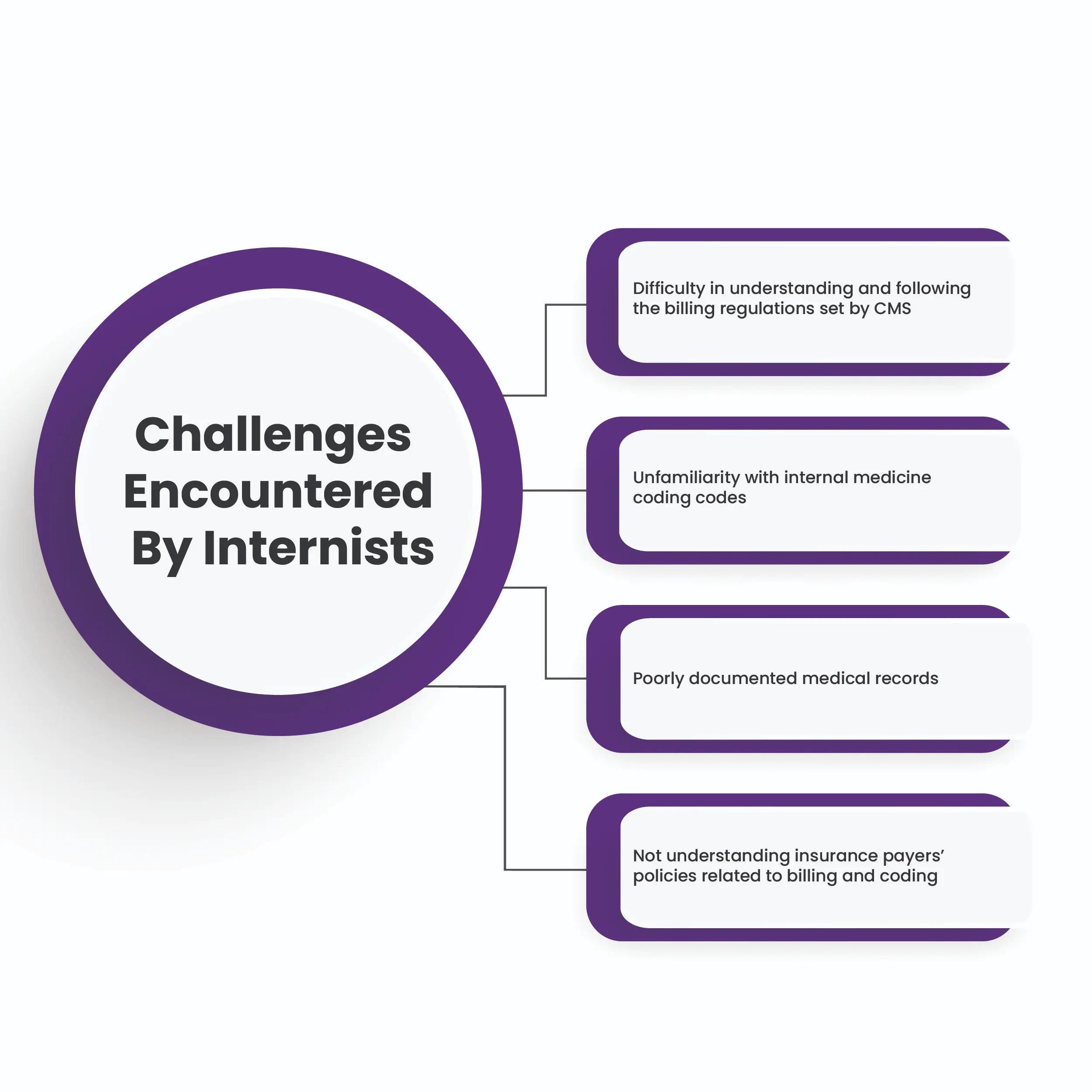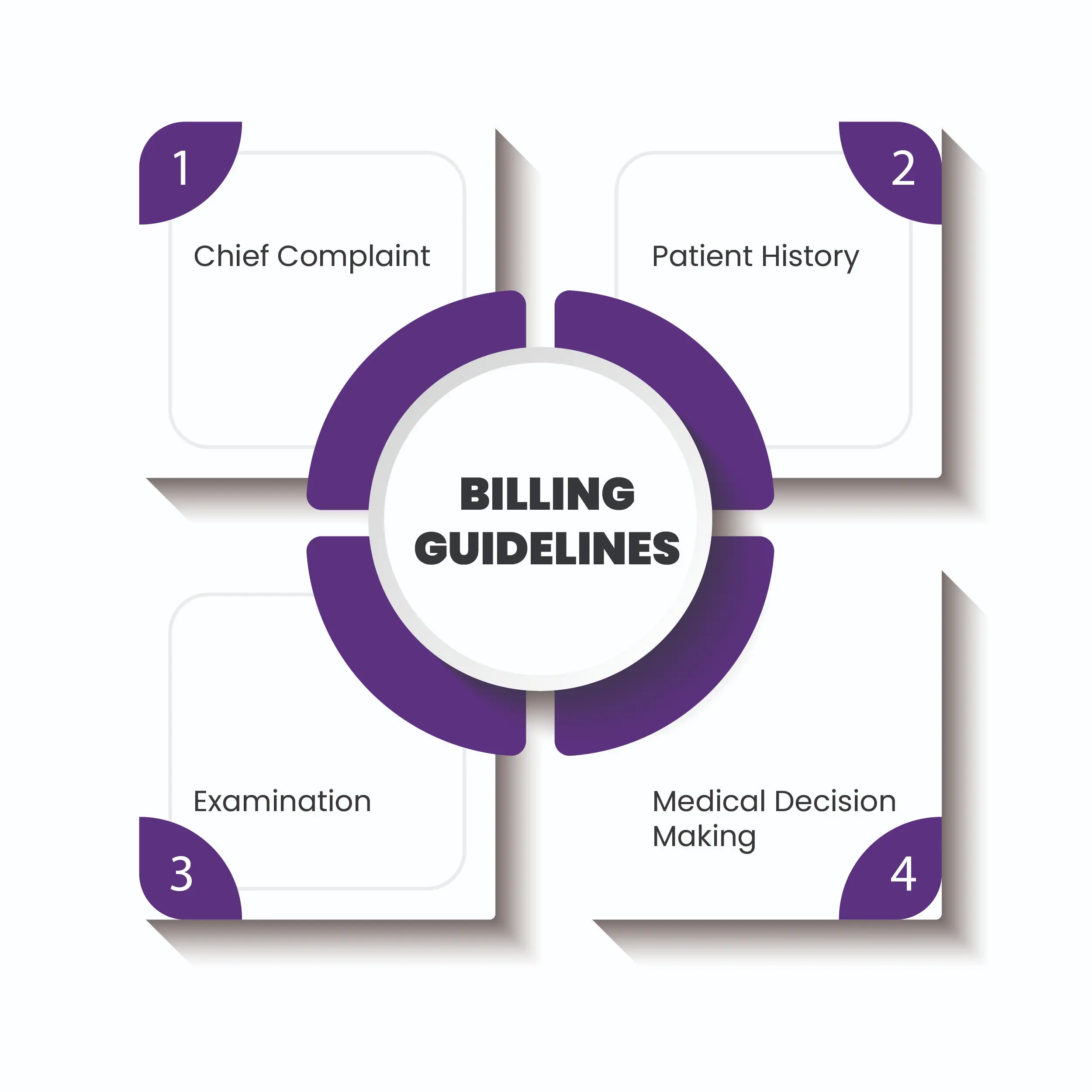As a medical specialty, internal medicine is known for offering comprehensive care to adult patients and is often confused with family medicine, which provides care for individuals of all ages and genders. However, the complex nature of internal medicine diagnoses can create challenges for providers. When it comes to billing and coding, leaving them vulnerable to denials and lost revenue.
In this article, we have gathered a comprehensive guide to must-follow guidelines for internal medicine billing and coding, along with the billing challenges providers face. We will also highlight some of the most common denials that can occur and provide best practices for avoiding them.
By reading until the end, we guarantee that you will gain a thorough understanding of how to navigate the complexities of internal medicine billing and coding and maximize your reimbursement potential.
What Basically is Internal Medicine Billing?
Internal medicine billing consists of a set of processes, rules, and regulations followed by the providers for accurate reimbursement for their services. The process involves accurately coding diagnoses and procedures.
In order to optimize claims submission and ensure that providers get reimbursed as quickly as possible. The Centers for Medicare and Medicaid Services (CMS) provides guidelines regarding internal medicine billing.
CMS and other agencies like the American Medical Association (AMA) provide a list of codes that are to be used for coding services, procedures, and illnesses accurately. These codes can also be found in both ICD-10 (International Classification of Diseases) and CPT (Current Procedural Terminology) books.
It is also important to note that proper documentation is necessary for accurate coding and billing. All information regarding the patient’s diagnosis, treatment, medications, and other services should be documented accurately. It is also important to document all communications with the insurance companies. In order to avoid any kind of negative repercussions from a reimbursement standpoint.
It is also important to document all communications with the insurance companies in order to avoid any kind of negative repercussions from a reimbursement standpoint.
Challenges Encountered By Internists
Internists are usually considered as the first or primary physicians whom the patient visits when he encounters any disease. So it's become more confusing for providers to bill and document the appropriate services code. So some of the most common challenges that internists encounter are:

Difficulty in understanding and following the billing regulations set by CMS
CMS Guidelines are often confusing and hard to understand, making it difficult for providers to bill their services accurately. These guidelines are updated on a regular basis, and it can be difficult for internists to keep up with the latest changes in regulations.
Unfamiliarity with internal medicine coding codes
Internal medicine billing and coding are rules that help doctors get paid for caring for adult patients. Doctors use codes from books like ICD-10 and CPT to show their services.
They also have to document their work so that insurance companies will pay them. Sometimes it is hard for doctors to understand all the rules, but it is important for them to follow these guidelines so they can get paid.
Poorly documented medical records
Poorly documented medical records can be a major issue when it comes to supporting claims or appealing denials. Poor documentation can lead to inaccurate coding, incomplete information, and billing errors. This can make it more difficult for providers to accurately bill for services, as well as receive accurate payments.
Not understanding insurance payers’ policies related to billing and coding
Not understanding insurance payers' policies related to billing and coding can be a major issue for providers. Different payers have different rules and regulations that must be followed in order to get the appropriate reimbursement.
This can be complicated and time-consuming if the provider is not well-versed in the policies of each payer.
Billing guidelines for internal medicine services
In internal medicine billing, accurate documentation of E/M codes is critical, and as such, internists often follow established practices when evaluating patients. This process typically involves four main steps:
- Chief Complaint
- Patient History
- Examination
- Medical Decision Making

Chief Complaint
The first step in the process is to identify the reason for the patient's visit, also known as the chief complaint. This is a brief statement of the patient's symptoms or medical condition that prompted them to seek medical attention.
Patient History
Next, the internist gathers a detailed medical history of the patient, including information on their current and past medical conditions, medications, allergies, and family history.
Examination
After obtaining the patient's medical history, the internist performs a thorough physical examination. This includes evaluating vital signs, performing a focused examination of the affected body systems, and identifying any abnormal findings.
Medical Decision Making
Finally, the internist assesses the patient's medical history, examination findings, and test results to make a diagnosis and develop an appropriate treatment plan. This process involves weighing the risks and benefits of different treatment options. While considering factors such as the patient's age, medical history, and overall health.
Some other general factors should not be overlooked when following the billing guideline for internal medicine.
Service code: The service code is a code used to describe the specific medical service being provided, such as an office visit or a physical examination. The code is used to determine the amount that the insurance company will reimburse.
Diagnosis code: The diagnosis code is used to describe the medical condition that the patient is being treated for. The code is used to determine the amount that the insurance company will reimburse.
Modifiers: Modifiers are used to indicate that a service was provided in a special way, such as a service that was performed by a resident or that was performed on the same day as another service. Modifiers can affect the amount that the insurance company will reimburse.
Time spent with the patient: The time spent with the patient determines the level of service provided. The longer the time spent with the patient, the higher the level of service and the higher the reimbursement amount.
Location of service: Service location, such as an office or hospital, can affect the reimbursement amount. Services provided in a hospital setting typically have a higher reimbursement than those provided in an office setting.
It is important to note that billing guidelines are subject to change, and it is recommended that internal medicine practices stay up-to-date on the latest guidelines to ensure that they are properly billing for their services.
Some of the Most Important CPT Codes Used In Internal Medicine Billing
The Current Procedural Terminology (CPT) codes are codes used to describe medical procedures and services. In the field of internal medicine, the following are some of the commonly used CPT codes:
- 99202-99215: These codes are used to describe office visits, including new patient visits and established patient visits. The specific code used will depend on the level of service provided, such as the length of the visit and the complexity of the medical problem being treated.
- 99217-99220: These codes are used to describe hospital visits, including inpatient visits and observation visits. The specific code used will depend on the level of service provided, such as the length of the visit and the complexity of the medical problem being treated.
- 99385-99397: These codes are used to describe preventive medicine services, such as an annual physical examination. The specific code used will depend on the patient's age and the level of service provided.
- 99241-99245: These codes are used to describe consultation services, such as a consultation performed by a specialist for a medical problem. The specific code used will depend on the level of service provided, such as the length of the visit and the complexity of the medical problem being treated.
Some of the Common Denials & Overcoming those Denials
Denials in medical billing are quite common and can be caused by a variety of factors ranging from incorrect codes to incorrect patient information. In internal medicine, the most common denials include:
Hospice Denials
If in a certain case, a patient gets enrolled in hospice care during the course of treatment, the claims submitted to medicare HMO will be denied as the medicare plans do not cover a patient on Hospice treatment.
The best practice to overcome this denial is to check the benefits and eligibility of the patient to confirm that the patient was on Hospice treatment. It is recommended to use GW modifier along with the CPT codes when claims are submitted
Medical Necessity Denial
Denials due to lack of medical necessity are common in internal medicine. This can occur when services or procedures are not deemed medically necessary by the insurance company.
The best practice to overcome this denial is to submit an accurate and detailed documentation that clearly states why the service was medically necessary. It is also important to ensure that all of the appropriate CPT codes and modifiers are used when submitting a claim to ensure that the service is properly coded.
Place of Service Denial
Place of service denials occurs when services are billed to an incorrect place of service, such as a hospital rather than an office.
To avoid this denial, it is important to properly code the place of service for each procedure and ensure that patient information is accurate. Additionally, if a provider switches locations during the course of treatment, it must be noted in the patient’s records.
These are just some of the most common denials that can occur in internal medicine billing. By understanding these denials and following best practices, it is possible to avoid errors and maximize reimbursement for services provided.
Ending Notes:
As the healthcare industry continues to evolve, internal medicine billing has become increasingly challenging and complex due to the constantly changing CMS guidelines. In order to navigate these challenges and provide the best possible care for their patients, providers must stay up-to-date on the latest billing processes and be prepared to tackle any reimbursement or denial issues that may arise.
By staying informed on the latest guidelines for internal medicine billing and coding, providers can approach any obstacles with confidence and ensure the best possible healthcare outcomes for their patients. If you want to know more or want your internal medicine billing and coding done accurately, Get in touch with HMS USA LLC. Let us handle your internal medicine billing needs so you can focus on providing the best care for your patients.
ABOUT AUTHOR

John Bradshaw
As a blog writer with years of experience in the healthcare industry, I have got what it takes to write well researched content that adds value for the audience. I am a curious individual by nature, driven by passion and I translate that into my writings. I aspire to be among the leading content writers in the world.
